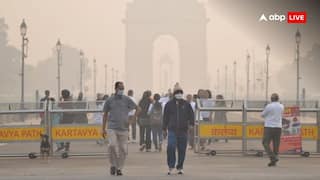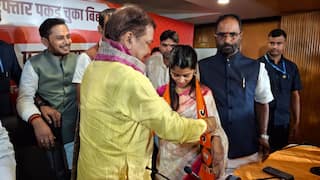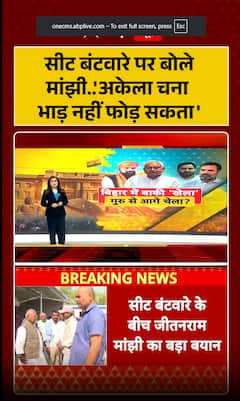OPINION: Only Healthy Nation Can Be Wealthy Nation, And India Is On Right Track To Be In G7 League
We will soon be numero uno globally in population, but that is not at all a negative point so long as we maintain excellent health parameters. Population should be considered an asset than a burden.

Covid-19 pandemic taught us a new lesson — the wealthy nations could not keep themselves healthy despite abundant resources at their disposal. The popular understanding that you can buy health with wealth has thus proved wrong. Economies collapsed like a pack of cards during the last two years. Barring the recent impact of the Ukraine war, Covid-19 pandemic was solely responsible for this.
Today, India is the chair for G20 nations and making efforts to be part of G7 (to be then expanded to become G8) that will be achieved soon. At the recently concluded G20 Summit held in Indonesia, Prime Minister Narendra Modi highlighted the importance of health besides food, energy security and digital transformation. This in itself is a great achievement for focused importance on health.
India is celebrating 75 years of its independence. When we talk about healthcare in India, there are diverse opinions — like half glass full or half glass empty! I am of the opinion that India has done remarkably well and has come a long way in matters related to health, nutrition and hygiene.
India did manage the Covid-19 pandemic fairly well, barring the unprecedented tough time of April to June 2021 orchestrated by the Delta wave. Finally, we have come to the stage where we can safely declare Covid-19 being endemic in India. During the pandemic, first we said Look to the West, then we said Look to the East, finally we said Look to the East, Look to the West, but India is the Best!
How India Progressed On Different Health Parameters Since Independence
India has progressed leaps and bounds in the 75 years since Independence on the health front. In 1947, life expectancy at birth was 32 years. Today, it is 70 years — 69 years for men and 71 years for women, to be precise.
Let us look at other parameters like our birth rate, death rate and our growth rate and compare the 40-year timeline.
In 1981, when I was in Geneva for the 34th World Health Assembly (WHA), then PM Indira Gandhi, in her address, had expressed concern about India’s growth rate being 22 per thousand or 2.2 percent. India's birth rate was 40 then and death rate was 18 per thousand. India has achieved a great deal, as our current growth rate is just 1.1 with birth rate being 1.82 percent and death rate being 0.73 percent, respectively.
Now look at parameters like public health spending. In 1985, it was mere 0.3 percent of GDP and currently it is 2.1 percent — a 7-time jump in 17 years. Though we are still far from the desirable goal of 4 to 5 percent of GDP for health as compared to the West, the antagonists ignore that the cost of spending on medicines, testing and consultations is proportionately far lower in India.
Looking at healthcare infrastructure, in 1947, India had 50,000 doctors for 35 crore people. Currently, we have 12.5 lakh MBBS doctors and 4.5 lakh postgraduate doctors, a total of 17 lakh modern medicine doctors, though the population has quadrupled since. Additionally, we have AYUSH (Ayurveda, Unani, Siddha and Homoeopathy) doctors. In 1981, we had one doctor for 10,000 people and our goal then was one for 5,000. Today, we have one doctor for 1,000 people. There are discrepancies between urban and rural and between tribal and non-tribal populations.
No doubt that the healthcare infrastructure is better in the urban areas with disproportionately placed high tertiary-care infrastructure. We need to look at how we can achieve better primary and secondary healthcare in the rural and tribal areas. Primary health centres (PHCs), sub-centres, community care centres and aanganwadi workers are the backbones of our healthcare and thus India has rightly given importance to it with priority to strengthening linkages to secondary and tertiary care.
We should also look at some health indicators in maternal and child health and on how we achieved the goals that were once thought to be impossible. First and foremost important is elimination of some of the fatal diseases that were preventable by vaccine. We eliminated polio, smallpox and tetanus because of the excellent coverage of immunisation. Institutional deliveries are now much more than home deliveries with better care of newborns, and that reduced our Infant Mortality Rate (IMR), Child Mortality Rate (CMR) and Maternal Mortality Rate (MMR).
Eventually, that strengthened people’s faith in the Family Planning programme, later rechristened as Family Welfare programme. Besides lack of knowledge and access to tools for birth control, people used to produce more children due to insecurity led by high IMR and CMR. Uninterrupted implementation of the Family Welfare programme, irrespective of change of guard at the Centre or in states, brought down the total fertility rate in women to 2.18 births per woman (2020) and thus we have also achieved population control.
The Strides Made In 75 Years And The Challenges Ahead
In the 1960s, ‘Roti-Kapada-Makaan’ (food, clothes, shelter) used to be the main discussion everywhere. When people were dying of hunger, food security took centre stage and other priorities took a backseat! Today, we have surplus food with hunger-related deaths being rare. After the 1980s, the rhetoric changed to ‘Bijlee-Sadak-Paani’ (electricity, road, water); and then sanitation, toilets, potable water, connectivity to villages and difficult terrains, electrification. And lately, the focus shifted to education and health, among other developmental parameters. As a result, today Indian doctors, engineers, IT professionals, MBAs are omnipresent and in great demand globally.
Undoubtedly, health has become a very important aspect and the Covid-19 pandemic taught us further that health is the most crucial criteria of life that requires healthcare preparedness. So if your infrastructure is excellent with adequate human and material resources, we can take care of any exigencies that include pandemics of gigantic proportions.
Our current challenge is that there are some 40 million children who are malnourished and 25 million children are stunted. Other important issues are HIV, tuberculosis and malaria. There has been a lot of collateral damage caused to these national programmes, as also to childhood immunisation programmes. We also have other infectious and lifestyle diseases to be taken care of.
India not only looks after itself but the entire world, with the philosophy imbibed in each of us ‘Vasudaiva Kutumbkam’ (entire globe is family). Today, India is the pharmacy and vaccine capital of the world. Nearly 92 percent of the global requirement of antiretroviral therapy (ART) for HIV patients, 80 percent of the global requirement of drugs to manage TB and other infections are made in India. Similarly, 75% of the global childhood immunisation is taken care of by low-cost but high quality vaccines made in India. Indian medicines are at a pittance of the innovator’s cost. To give some examples — ART is at 0.7 percent of global cost (69 USD versus 10,452 USD per patient per year) and medicines to cure Hepatitis-C are at 0.3 percent of global cost (250 USD versus 84,000 USD per patient course for 12 weeks).
I believe India’s upward stride in economy can be attributed to its achievement in healthcare, maybe inadvertently. Only if you keep up good health, wealth will follow and in that sense only a healthy nation can be a wealthy nation!
Achieving good health is not a simple job but not an impossible one. Though we will soon be numero uno globally in population, with 17.5% in global share, that is not at all a negative point so long as we maintain excellent health parameters. In fact, the population should be considered as an asset rather than a burden.
What we would like to see happen is “One planet, One health and One future”, and India playing a pivotal role there. During the Covid-19 pandemic, we experienced once again how India is a classic example of how an adversary can be turned into an opportunity.
(The author is Consultant in HIV in Infectious Diseases, President of AIDS Society of India, Secretary General of Organised Medicine Academic Guild-OMAG and Governing Council Member of International AIDS Society.)
[Disclaimer: The opinions, beliefs, and views expressed by the various authors and forum participants on this website are personal.]






































